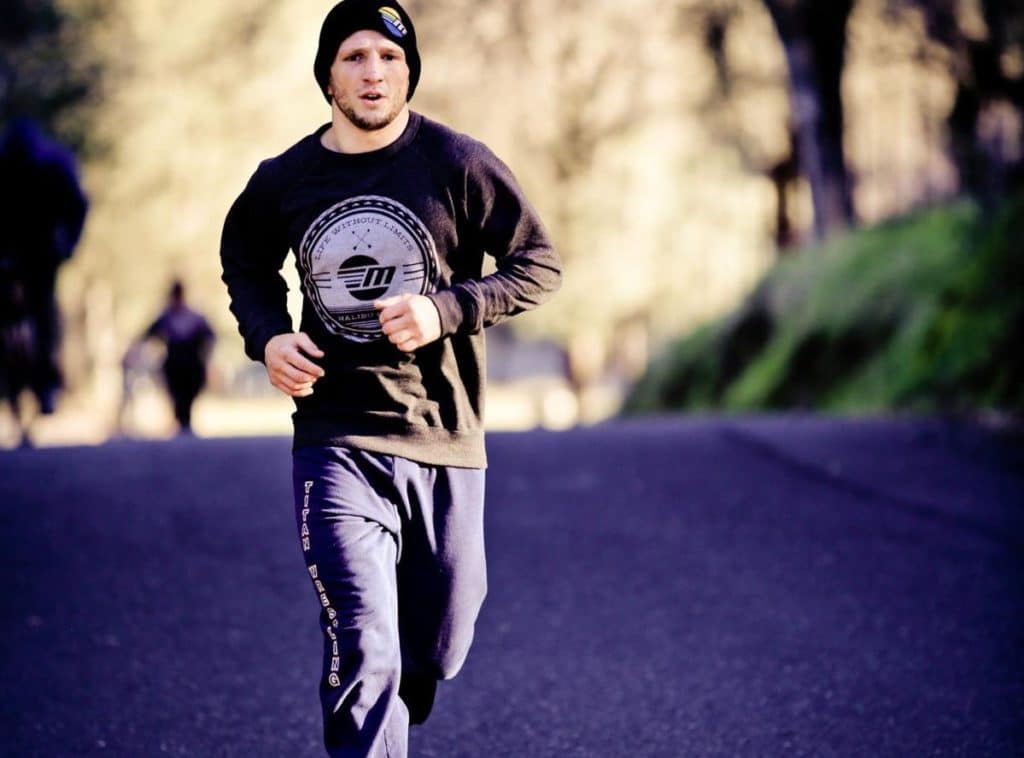
You’re tuned into the latest UFC event, and the next fight is between two middleweights that look like they could step onto a Mr. Olympia stage. One day prior they weighed in at 185lbs but since then they’ve rehydrated and look like monsters. These guys are absolutely shredded; six pack, broad shoulders, huge legs, etc. Picture guys like Yoel Romero, Jared Cannonier, or Paulo Costa.
The first round is full of back and forth action with both guys throwing hard combinations along with some grappling scrambles, and clinch fighting up against the cage. The second round begins and the pace slows… a lot. It doesn’t take long to realize that these guys are completely gassed already! How could that happen so quickly?
It’s obvious they trained hard. A physique is not always a direct indication of conditioning, but it’s not as if these guys are doing bodybuilding workouts. They’re professionals with the best coaches and training partners. They’re at jiu jitsu practice, wrestling, kickboxing, lifting weights, and running multiple times per day for upwards of 12 weeks. You would think their cardio is amazing. How can they be so exhausted after just five minutes of, albeit intense, fighting?
Running, or roadwork, has been a staple in the boxing world since the beginning. As mixed martial arts grew in popularity, it seemed natural that running would easily transition from one combat sport to another. But why is it so common to see an MMA fighter fatigue early in a fight while it remains virtually nonexistent in boxing?
(P.S. the illustration was not an indictment on Romero, Cannonier, or Costa I was simply trying to think of the best physiques in the middleweight division).
Becoming a More Efficient MMA Fighter
Boxers have the advantage of participating in a sport that has been in our culture for over a hundred years. They can look back at the training regimens of past champions and personalize their programs based on those principles. At the end of the day the nature of the sport is simple; movement and punching. With repetition and technique mastery, they can develop a level of efficiency which prevents them from tiring too quickly.
Mixed Martial Arts, while it does have a boxing component, is otherwise completely different. MMA is a combination of boxing, muay thai kickboxing, wrestling, and jiu jitsu. The unpredictable nature of the sport makes it challenging to develop any sort of efficiency. You can develop efficiency within each skillset, but when you transition from one to another, things can get challenging. For example, a fighter may be able to hit pads round after round without breaking a sweat, but if he had to start wrestling in the middle of it he would tire more quickly.
I’ll repeat the word a million times because it is what all athletes should strive for at all times, efficiency. Your conditioning program should complement your skill training to develop a high level of efficiency. Imagine breezing through a roadwork program during camp only to be exhausted two minutes into the actual fight. The level of shock and panic from this rapid onset of fatigue is enough for you to make a mistake and lose the fight. This is a direct indication that your conditioning/roadwork program was way off.
Boxing and MMA have aerobic and anaerobic elements to them. There is no way to put an exact percentage on it, but proportionally boxing is probably more aerobic than MMA. This is partially due to the simplicity of the sport of boxing. Like we mentioned before, boxing is punching and movement. It is much easier for a boxer to pace themselves over the course of a fight.
Activity duration is also a factor. A high level boxing match is usually 12 three minute rounds (36 minutes of total activity) while an MMA match is usually three five minute rounds (15 minutes of total activity). Each sport has one minute of rest between rounds. Strategy also makes MMA more anaerobic. You only have three rounds to prove yourself to the judges, so naturally you have to push yourself in that short timeframe. In boxing, it’s common to see a feeling out process for the first couple rounds. Mixed Martial Artists don’t have that luxury.
Because of these differences, it makes sense for a boxer to focus more of their attention on developing aerobic conditioning than it would an MMA fighter. Keep in mind this article does not speak in extremes. An MMA fighter should absolutely develop a good aerobic base. But in my opinion they spend far too much time running five to six miles or more at a clip. You only have so much time in a training camp. They should spend a disproportionate amount of that time performing high intensity cardio bursts, and optimizing their recovery between these bouts of activity. It translates far better to a three round war.
General Conditioning vs. Sport Specific
Advocates for the old school roadwork approach would argue that roadwork is not just long distances. It is a combination of aerobic (low intensity long duration) and anaerobic (high intensity short duration) activity. And they’re absolutely right. My argument against roadwork is not against working various energy systems through different types of running. Working through different heart rate zones and increasing VO2 max is extremely important. My problem is with the modality itself.
Is running itself crucial, or just a means to an end? Is there something better we can do instead? Strength coaches can get a little nutty with sport specific movements, but I do believe that the exercise should at least somewhat mimic the sport itself. When do you ever run in an MMA fight? The answer is never sans for a Jorge Masvidal flying knee. Hell, if you want to get crazy, I would argue that there is actually more lateral and backward movement than forward movement altogether! Running would be a great conditioning tool for a sport like soccer. You know, a sport where you actually run.
I would much prefer an MMA athlete perform a modality that is more taxing to the body as a whole. As we alluded to before, fighters have to transition from striking to grappling in an instant. There are instances where a conditioned upper body and core is crucial.
Better choices for conditioning in my opinion would be the airdyne bike, swimming, heavy bag work or even an exercise circuit. The airdyne quite simply sucks, and I mean that in the most complimentary way. It brutally taxes both your upper and lower body. It’s a grind, just like a fight is. Swimming allows for a fluid (no pun) full range of motion throughout the entire body. Heavy bag work is obvious and the most appropriate to an actual fight. An exercise circuit can be creatively orchestrated to incorporate MMA specific movements while maintaining constant activity and elevated heart rate. You could easily do heart rate zone training within these exercise modalities, and it would be far more relevant to fighting than running would.
The principles of roadwork can still apply using these different exercise techniques. The basic strength and conditioning guideline is to decrease volume and increase intensity as competition day approaches. This ensures that the athlete is still training at a high intensity and maintaining a level fitness, but not to the extent where it would diminish recovery and possibly lead to injury/illness.
Benefits of Running
The most overlooked aspect of coaching is fine tuning a program to an athlete’s specific personality. Mental health and confidence are essential to success, especially in fighting, but most strength and conditioning coaches only want to talk about programming techniques.
If you can’t tell by now, I think running is overrated when it comes to conditioning for fighters. With that being said, I’m not going to be stubborn. If I’m coaching a fighter who loves to run; it clears his mind, it relieves stress, it makes him happy, etc. then I’m going to let him run! It would be asinine for me to remove running from his program when it’s clear that it’s beneficial to his mental health. Never let your ego get in the way of success.
